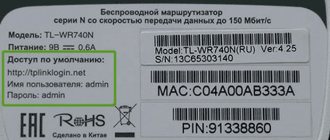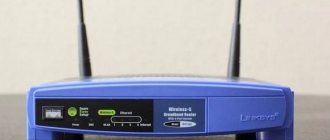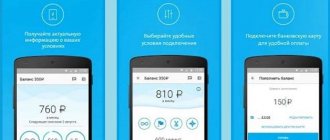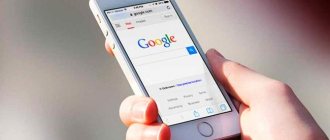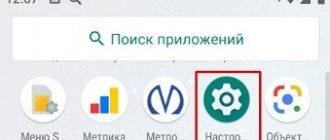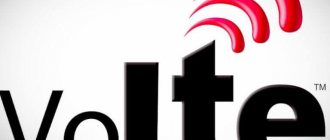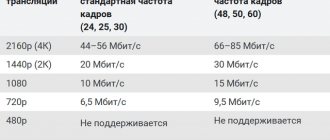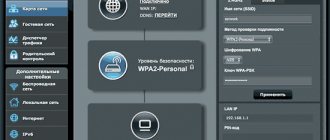Every user of modern Apple phone models who has switched or wants to switch to the fourth generation communication format should know how to enable 4G on an iPhone. You can change the standard quite simply: if you previously used 3G, then the first thing you need to do is check the SIM card and the gadget itself for compatibility. If support is possible, then it is enough to enable the standard using simple steps. If the SIM card does not fit, then it can be changed at the operator’s official center while maintaining the number. And lastly, the most expensive one - if the iPhone does not have the ability to work with fourth-generation technology, then it is recommended to replace it with a newer one. For example, Iphone 5 supports 4G, but only at low speeds of up to 100 Mbit/s, and the Iphone SE 4G model can operate at 150 Mbit/s.
Activating the service
To connect to a 4G service, you need to check the capabilities of the SIM card and phone to support them. If there is one, then it is necessary that the gadget has all the settings for connecting to the Internet. After installing the SIM card, you need to turn on 4G on your iPhone and you can start using it. If all settings are made correctly, the phone can automatically establish a connection. In this case, the LTE icon will light up in the upper left corner. This indicates that the phone can work on the Internet.
on iPhone" width="300″ height="169″ />
Note! If there are no failures in the system and software, the device will immediately be connected to the fourth generation standard automatically.
LTE and 4G
Both are fourth generation standards. However, in fact, domestic mobile operators are positioning LTE together with 4G. That is, it turns out to be one technology, which is presented as 4G LTE. But not everything is so smooth. The fact is that LTE is a standard that was created and developed on the basis of third-generation communications, in contrast to 4G, which is a full-fledged fourth generation. But most companies and operators resorted to a trick, offering subscribers old for new.
The LTE standard is advertised as a fourth-generation technology, but does not live up to its characteristics. Even professionals cannot always identify the fundamental differences between 3G and LTE, except for speed.
Interesting! The use of fourth generation networks in the world began in 2010 and continues to this day. As for the domestic communications market, it was possible to test the capabilities of this technology only in 2012.
What does LTE give?
In comparison with previous standards, there are almost no characteristic technological features between the presented technologies, since the newer one can be called a logical continuation of the old one. This suggests that 4G is simply a more “advanced” standard in technological features, which resulted in the main quality for the average user - increased connection speed. It is enough to take speed measurements to understand that the 4th generation is head and shoulders above the previous one.
Advantages of the standard:
- The difference between 4G and 3G in smartphones is IP telephony. It is not supported by third-generation networks, but the fourth allows voice transmission without delays, that is, ping;
- wider and higher range of operation, which allows you to increase the range of data transmission from the base station to the subscriber;
- The difference in speed between 3G and 4G is huge. Even the smallest is 4G at 100 Mbps. several times higher than its more outdated analogue;
- the ability to replace signal loss by automatically turning on the 3G network without losing the connection.
Minuses:
- increased cost of tariffs based on LTE;
- the need for a special SIM card;
- low connectivity and small coverage area by cellular operators. Correct operation is possible only in large cities.
Important! Before you connect 4G to your iPhone, you need to make sure that this standard works correctly in your area of residence.
Why doesn't LTE work on iPhone?
In some cases, LTE may not work. If for some reason, even with LTE turned on, the Internet is unstable or the connection is periodically interrupted, this may mean that there are some problems on the side of the mobile network operator. For example, technical work.
Enable LTE
In addition, the reason why the Internet does not work correctly may be hidden in the disabled data transmission. If LTE is turned on, but the data transmission itself is turned off, then the smartphone will not be able to transmit data to the network, therefore, the Internet will not work. To enable the cellular network, you need to go to the settings and go to the “Cellular Communications” section, in which you need to select the desired type of connection (3G, 4G, LTE).
You should also check whether the subscriber is connected to the Internet service.
Important! To do this, the appropriate tariff must be set on the SIM card or the necessary services must be activated. To check the number for Internet connection, you need to contact your mobile operator.
Thus, it becomes clear what the LTE function is in a phone, what it is in an iPhone and what role it plays. It should be said that for any modern smartphone the Internet is a significant tool. LTE helps speed up its speed significantly and that is why it is better to know how to use this option.
Which models support the transition?
Not all models can operate in the 4G and LTE standard. That’s why queries like “does iPhone 5 support 4G or not” are so common on the Internet? The thing is that the first models of the brand are configured to work in older technologies, such as EDGE, 2G, 3G. The fourth generation was introduced a little later. The first model to be able to work with the new standard was iPhone 5.
Review and configuration of the D-Link Dir-320 modem
Accordingly, devices that came out later can function normally in the communication standard. List of devices from Apple that operate in fourth generation communications and what speed they can deliver:
- models of the fifth line are capable of supporting speeds of up to 100 Mbit/s;
- models 5, SE, 6, 6 Plus operate up to 150 Mbit/s;
- devices such as 6S and 6S Plus support up to 300 Mbps;
- models from the latest line - from 7 to XE - operate at a speed of 450 Mbit/s. and higher.
However, as practice shows, Russian mobile operators cannot keep up with this development, so the connection speed no longer depends on the model of the gadget, but on the capabilities of cellular communications. If you want to get the fastest possible connection, you should study the coverage map and make sure that your area of residence is in an area with a stable 4G cellular network signal. The distance from the base station also plays a big role.
Note! You can catch the maximum signal, or you can catch the average one, respectively, and the speed of data transfer will vary.
How to switch or change 3G to 4G on iPhone
To switch the mode, just go to the settings and go to the “Cellular networks” section, where you can find mobile data transfer. A person will see a list from which he can select the communication standard that suits him.
Depending on the type of mobile data transmission you choose, your smartphone will access the Internet at different speeds. Communication standards also affect voice calls. Sometimes, due to poor signal quality, the call may be interrupted or intermittent. Therefore, for the best forwarding, it is recommended to turn on 3G or 4G.
How to enable and configure
Any iPhone model gadget is initially ready to work on the Internet with the standard supported by the installed SIM card.
What are the differences between 3G and 4G networks: features, advantages and disadvantages
When it is determined that the phone model can work in the fourth generation standard, and everything is ready for use, then it must be enabled. For example, how to enable 4G on iPhone 5:
- "Settings".
- "Cellular".
- "Data Options".
- "Voice and Data".
- Select LTE from the menu.
After this, the system will notify you that the network is not certified by the operator. This may affect your device's battery life, messages, calls, and cellular data. Needs to be confirmed. After this, the gadget will switch to 4G LTE.
Note! However, sometimes it happens that you have to enter the data yourself.
How to set up 4G on iPhone 5 and older models manually:
- You need to check with your operator in advance about parameters such as username and APN. You can do this on the official website or by contacting technical support.
- Enter the gadget settings.
- Select "Cellular Network".
- Open the “Data Transfer” tab.
- Enter specific.
Note! A specific login, password and APN are set for a particular cellular operator.
For Megafon you need to enter:
- APN: internet;
- username: gdata;
- password: gdata.
One of the MTS market leaders requires introducing the following combination:
- APN: internet.mts.ru;
- username: mts;
- password: mts.
For Beeline subscribers you need to dial:
- APN: internet.beeline.ru;
- username: beeline;
- password: beeline.
Tele2 users must enter:
- APN: internet.tele2.ru;
- username: do not enter anything;
- password: do not enter anything.
There is also another way to get all the necessary operator parameters automatically. To do this, it is recommended to call technical support and request to receive data via SMS. It will be sent to your phone and after opening the message, all settings will be made automatically.
Note! The user will only need to reboot the device.
How to set up LTE function
In new iPhone models, you can configure the LTE function as you wish. For example, improve the sound quality of a voice call through accelerated data transfer, as well as improve Internet speed. Before you enable LTE on your iPhone, you should find out whether the phone supports this option. This can be viewed by going to the “Cellular Networks” tab.
Important! Some telecommunication networks do not provide LTE communication type.
If the LTE function is available to the subscriber, he will be able to turn it on or off. If there is no such function, then the user will be able to turn off the Internet, either 2G, 3G or 4G.
Setting up LTE
Enable and make LTE work
If second or third generation networks do not suit the user, then it is quite possible to switch to a new technology at any time. However, it is worth understanding that during operation and the connection is lost, the network automatically switches to a lower one so as not to lose the Internet signal altogether. If you force a low standard, then the phone will no longer be able to improve the situation. In this case, if the Internet connection is lost, the Network will disappear completely until the user is again in the area of a stable signal.
Important! The “LTE Only” function is only available on Android. iOS will still transfer the user to a lower technology.
How do I reset my APN settings?
Reset APN settings to default on your Android phone
- Tap Settings.
- Tap More.
- Tap Mobile Networks.
- Tap Access Point Names.
- Tap the menu icon (3 vertical dots)
- Tap Restore Defaults.
- The screen displays Restore APN settings to default.
- The screen displays "APN settings reset to default completed."
24 Mar 2015
Accurate identification of phone brand
It can be difficult to visually identify a specific model. This is due to the fact that outwardly some of them are almost the same. For example, it is not always possible to distinguish model 6 from 7 or even 8. To be sure, you can look at the number indicated on the back cover. There is a capital letter “A” and a set of numbers after it. You can identify a gadget by numbers:
- iPhone: A1203;
- iPhone 3G: A1324, A1241;
- iPhone 3GS: A1325, A1303;
- iPhone 4: A1349, A1332;
- iPhone 4S: A1431, A1387, A1387;
- iPhone 5: A1428, A1429, A1442;
- iPhone 5S: A1456, A1507, A1516, A1529, A1532;
- iPhone 6: A1549, A1586, A1589;
- iPhone 6 Plus: A1522, A1524, A1593;
- iPhone 6S: A1633, A1688, A1700;
- iPhone 6S Plus: A1634, A1687, A1699.
Models in Russian frequencies
All models that support the LTE 4G standard are capable of operating in Russian frequency bands, that is, we are talking about any that are older than the fifth iPhone. This makes the task easier for subscribers; there is no need to check the phone for frequency compatibility.
There are no problems with enabling the 4G and LTE standard on iPhones. The main thing is to make sure that the gadget is suitable for the technology. The 4G standard is supported by models from iPhone 5. But if a smartphone in this series still does not have the declared speed, then it is worth checking whether the SIM card for iPhone 5 supports 4G.
Podgornov Ilya Vladimirovich All articles on our site are audited by a technical consultant. If you have any questions, you can always ask them on his page.
Error in iOS
Anything can happen! Even Apple can do something tricky in the system and at some point your LTE module may stop working. I came across it. What to do about it?
- restart iPad/iPhone;
- If it doesn’t help, then reset the network settings. Settings->General->Reset->Reset network settings. After this, you will have to reconfigure Wi-Fi, but perhaps the problem with LTE will be solved.
